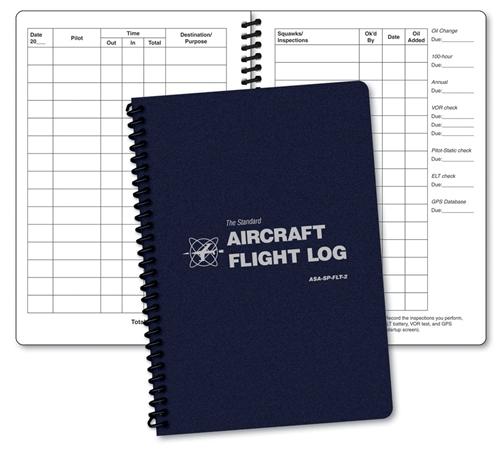-
Posts
6,085 -
Joined
-
Last visited
Content Type
Profiles
Forums
Articles
Everything posted by BTM_Pix
-
The interesting thing about the Smooth 4 (aside from being able to see the screen) is that control wheel on the side that they use to control focus and zoom on their phone app. As it uses Bluetooth to send that to the phone, it does throw up a potential hack to get it to control the zoom function of an RX100 instead using a very small box of tricks.
-
Now you are just being picky I actually had a senior moment and meant to link to the mods to the Smooth 4, which is now the preferred option over the Q. The Q is still workable if you are just using it wide or if you have a handle mounted side grip to take your phone as a viewfinder through the Sony app, so it would be akin to a higher quality DJI Osmo. The Smooth 4 is a better option though.
-
Voigtlander 15mm f4.5 VM Super Heliar III
-
I think that might have been me I definitely prefer these types of films as well and yours is another good example. I also now know to pack some midgie spray if I go to Iceland
-
Kipon has announced it is has shipped its first batch of adapters for the new cameras. A very extensive range too and the standout for me is the C/Y adapter for the Z as you will finally be able to use the Contax Zeiss lenses on a Nikon without the shenanigans involved with Leitax mods or the 1.4x optical correctors like the Fotodiox. Interesting to see them talk of focal reducers on their way soon as well. If one of them is an EF to R version then it will be a way of getting some of the full frame FOV back off Canon in 4K mode http://www.kipon.com/en/articledetail.asp?id=129
-

Are cameras without IBIS and AF useless for shooting video in 2018?
BTM_Pix replied to A_Urquhart's topic in Cameras
Are they essential? No of course but IBIS and AF are like autoexposure functionality - as long as you can switch them off when you want full control then why wouldn't you have it if you could and have the best of both worlds? A lot of people, myself included, just want the option of a helping hand when they need it and its far, far easier to use an ON/OFF switch than try and build that additional functionality on yourself with gimbals and focus systems. Obviously, the only way to fully illustrate this is through the medium of hedgehogs. This is what it looks like to most people when they switch on a camera that has those features and want to grab some shots And this is what greets then when they switch on a cinema camera -
The weather got a bit biblical to be honest! I haven't really got any long glass for it so I used it mainly for GV stuff of the stadium and preliminaries (including the moody shot of the soaked flags on the terrace as it looked like it was going to be called off at one point!). It worked really well in this role as the M lenses are so small that you can have quite a range of them in your pockets without having to haul too much gear round. In game, I used it for a few shots that were close enough to my position (both with the cheap 135mm f2.8 from the haggling at FotoMeyer ) and the manual focusing was fine although the peaking is a bit conservative at times. Roll on the new AF lenses from Sigma.
-
People have been having some success modifying the Smooth Q for the RX100 for a very minimal (size and cost) setup. There are a couple of different branded (JJC and Fotga being two of them) versions of the Sony wired remote which will give you Start/Stop and Zoom controls for about £20 to use with any gimbal. Or, like here, combined with the Smooth Q mod.
-
The trapped battery reports on BMC User are quite disturbing. On the other hand, one of the people that it has happened to got his camera from CVP, which means they have at least shipped another one other than @Snowfun 's one so I'm now one further up the list. So, swings and roundabouts and all that.
-
My favourite recent quote from him was when they were launching the EOS-R and he said "Every three years Canon releases a camera thats three years out of date". Always worth tuning in to his channel immediately after one of the well known channels posts a "Its full frame so its twice as good" type of video as he goes off his head!
-

First test of Magic Lantern on the Canon EOS R by EOSHD and A1ex
BTM_Pix replied to Andrew - EOSHD's topic in Cameras
-

Canon EOS R first impressions - INSANE split personality camera
BTM_Pix replied to Andrew - EOSHD's topic in Cameras
I put some stuff on the lenses thread from it. The one I got will need shaving fractionally as it won't hit infinity on the M adapter on the SL but I'm led to believe that not all of them do. Shallow : And not so shallow : -
Wait until the Australians on this board wake up and see this Talking of copyright, millennials and AC/DC though..... One of my guilty pleasures is watching YouTube reaction videos of young people listening to classic rock for the first time, especially when they hear Bohemian Rhapsody! AC/DC are also a popular subject for it but people have had to start removing the videos because their label/publishers/management aren't happy enough with picking up the ad money but want them removed. Considering the reactions to their music is usually very positive in these videos it just seems counter intuitive that they'd do that (particularly as they are getting the money as well) and it would also seem to fall under fair use policy as it is essentially a review/critique piece but its difficult to fight for the content creators to fight these battles. You'd have to suspect its automated systems just being overly zealous as God knows the music industry shouldn't really be turning its nose up at any money making and promotional opportunities.
-
The EVF is pretty amazing and makes it really viable for manual focusing. I'll tell you how good the weather sealing is later tonight.......
-
Yep, there seems to be quite a few people who have done it. https://m.youtube.com/results?search_query=Rx0+smooth+q
-
I think there is even a custom bracket that someone has designed that you can download and 3d print for the Smooth Q. As for the GH5 and the Osmo Mobile.....I bet you there is someone out there mad enough to have tried it. And if there isn't then its time for you to step up! If you can power the camera externally and use the lens cap lens that Olympus do then you could shave some weight off it but it could still be a bridge too far for it.
-
You can mod the Zhiyun Smooth Q to take and RX100 relatively painlessly. Some tutorials and examples here. https://www.youtube.com/results?search_query=smooth+q+rx100
-
The Osmo Plus. The zoom option lets me use it as a glorified PTZ camera for live press conferences.
-
I have the Z Axis for the Osmo. Its not cumbersome and it is effective but it does make people stare a little bit. By which I mean a lot. I am going to pick up one of those ones I linked to in a couple of weeks and my exact thoughts were how it would fare with an IBIS camera (specifically my cinevised A6500 ) so I'll let you know!
-
There is still a permission element to the use of the music that has to be sought, which obviously varies on things like territory, type of medium, length of license etc. Its bad enough if you just want to cover a song yourself but if you want to use the original recording then its even more of a minefield because you are having to deal with whoever owns the mechanical rights as well. That is an area where rights owners - and lawyers - had some significant paydays with legal action against the use of samples. The case of "Bittersweet Symphony" by The Verve where they lost 100% of their royalties even when they thought they had got the right permissions being one sobering example http://ultimateclassicrock.com/rolling-stones-bitter-sweet-symphony/ Depending on their agreements with their piblishing companies, artists themselves can also often refuse permission if they don't want their music associated with something, such as Springsteen stopping Reagan using "Born In The USA" and Talking Heads stopping "Road To Nowhere" being used in an attack ad in another political campaign. Although the latter is ideally placed to become our new national anthem post Brexit. As Jon says, when it comes to YouTube it is actually easier to deal with using their tools than if you were trying to clear it yourself for an independent film etc.
-
I don't know anything about the Glidecam product but a while back I was looking at Z axis addons for one handed gimbals. I got caught up in other stuff so didn't end up getting one but I was looking again the other day and they seemed to have come down in price a lot. The one in this review is about £65 on Amazon and could be a two birds with one stone solution with regard to reducing fatigue as well as adding what from this video appears to be an impreasive degree of additional stabilisation. With it being an add on it also gives you that option to remove it and just use the one hand unit when you need a bit more low profile. https://youtu.be/_wmaNdImgf0
-
The bravest cowboy in the west.
-
Its also a huge boost at a low price for anyone with an LS300 as it allows you to record 4K60p without the additional bulk of something lile the Ninja Assassin. More signifcantly, I can see a lot more 5" loupes becoming available because of this monitor so it can be used as an EVF, which means it can also overcome the LS300's achilles heel of it having an absolutely abysmal EVD and flimsy LCD fold out monitor.
-
It also has a nifty function where it saves the information about the monitoring LUT you were using in the metadata of the clip which is then picked up and displayed in the clip field in Resolve. I like the baked in LUT function too but as an alternative if you need to turn things round quickly in HD while still retaining the option to have a more flexible master in 4K for future finessing then the option of being able to apply the LUT to the HDMI output is a very good reason to pick up a used Atomos Ninja Star off eBay.
-
Kipon do one with autofocus for about £230 and they also do a version with a speedbooster in it for about £100 more.








